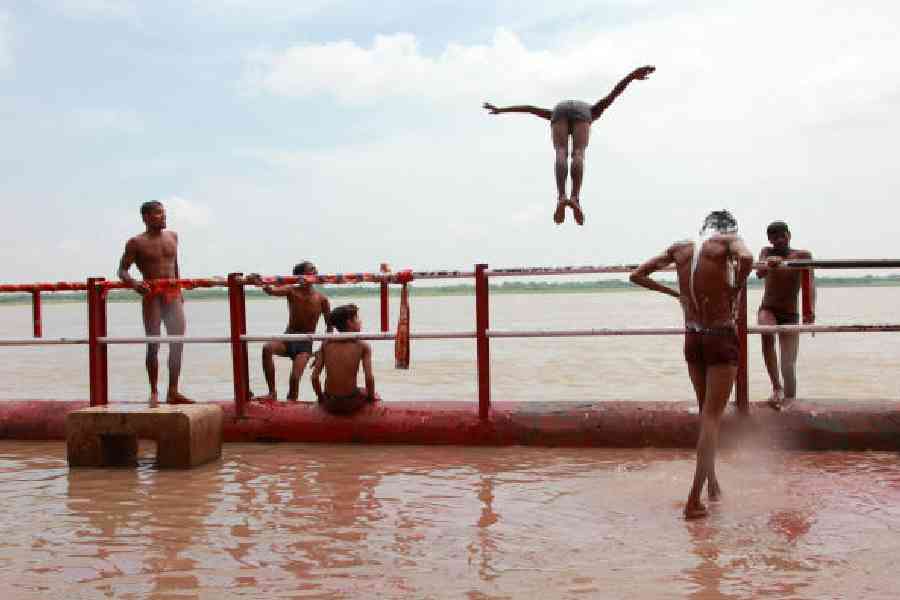For many, the idea of swimming in open water is unnerving. The waves, tides and deep waters often prevent people from venturing out. But for those who do, it’s a fun and exhilarating challenge that’s good for your body and mind.
Open-water swimming provides a long list of benefits. Because you do it in nature, it can be therapeutic. A 2020 study of novice outdoor swimmers found that after 10 weekly sessions, they experienced fewer bad moods and an increase in well-being. Like with many endurance sports, it helps strengthen your cardiovascular system, keeping your heart healthy and reducing the risk of diabetes significantly.
And as with pool swimming, it’s a total body workout.
“Swimming in a lake or an ocean is a much less controlled experience than swimming in a pool,” said KJ Kroetch, a certified coach for US Masters Swimming, a national adult swimming organisation based in Sarasota in Florida.
Practise in the pool
Swimming in dark, cold water can be intimidating. Sara Castellano, a special-education teacher from Lafayette, Colorado, US, started open-water swimming about a decade ago in a reservoir. “It sounded horrible and scary,” she said. “I didn’t even manage to put my face in the water that first time.”
Her fellow swimmers persuaded her to return for more, and she’s since become a regular competitor in long-distance racing. But it meant mastering a few key techniques in the pool beforehand.
The first is learning to breathe on both sides of your body while swimming freestyle — the most efficient stroke in open water — so you can turn your head away from the sun or breaking waves. Practise breathing every third stroke.
You’ll also need to learn to “sight” in open water, so you can monitor where you are in relation to shore and where you’re headed. You can work on this in a pool by lifting your head up every few strokes to identify items around you, like a lounge chair or a starting block. With practice, you’ll learn to sight in one fluid motion without interrupting your stroke, and to stretch out the intervals between lifting your head.
Lastly, use the pool to practise swimming longer stretches without breaks. If you’re already adept at swimming 1,000 yards in short sets, try two sets of 500 yards each. After that, try a full 1,000 yards without stopping to rest.
Leave fear behind
Getting comfortable swimming in oceans and lakes often means overcoming fear, said Dan Simonelli, a marathon swimmer based in La Jolla, California, US, and the founder of the Open Water Swim Academy.
“A common fear is encountering wildlife in the water,” he said. Concerns over jellyfish, sharks or other creatures can cause your imagination to get the best of you. However, interactions with animals or fish are rare, Simonelli said.
Open water can also cause you to panic — when you can’t touch the bottom, say, or when it gets choppy. To minimise this feeling, dunk your head under while you’re still standing in shallow water to get used to it.
“That will jump-start physical processes in your body,” Kroetch explained.
For your first open-water outings, swim along the shoreline where you can touch the bottom, or in a protected cove or lake. Be mindful that the ocean has its own particular challenges, such as riptides, currents and waves. If you’re swimming somewhere with lifeguards, check with them about the currents, tides and other dangers. Let them know you’re heading out, so they can keep their eyes on you.
Before you take off, identify some landmarks on shore to help orient you — lifeguard chairs, houses or hotels. And finally, take your time.
“Start out nice and slow, using a controlled breathing pattern to keep yourself calm,” Simonelli said. If you do get nervous, flip onto your back and float until you feel calmer.
When swimming in open water, you want to be highly visible to passing boats. The best option is to swim alongside a kayaker or paddleboarder.
Your second-best choice is to swim in an open-water swim group. If you must venture out alone, make sure that you wear a brightly coloured swimming cap and consider using a personal swim buoy strapped around your waist.
Bring two sets of goggles to choose from — one for overcast conditions and a mirrored set for sunny days. A triathlon wetsuit can keep you warm and provide extra flotation, though avid open-water swimmers often prefer the feel of water on their bare bodies.
Another useful tip is to use swimming earplugs if you’re worried about the cold water. “They can provide a surprisingly large amount of warmth,” Castellano said.
Expect that your first outing might be somewhat jarring. But Simonelli urged people to stick with it.
“It’s a moving meditation for me,” he said. “It’s also freedom. You’re in a wide-open expanse of nature, and the energy of the water is palpable.
NYTNS










